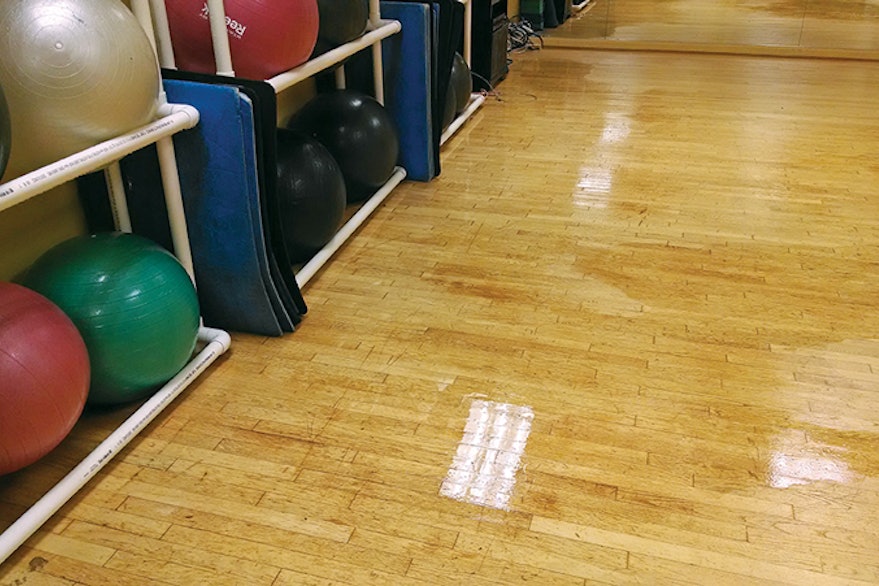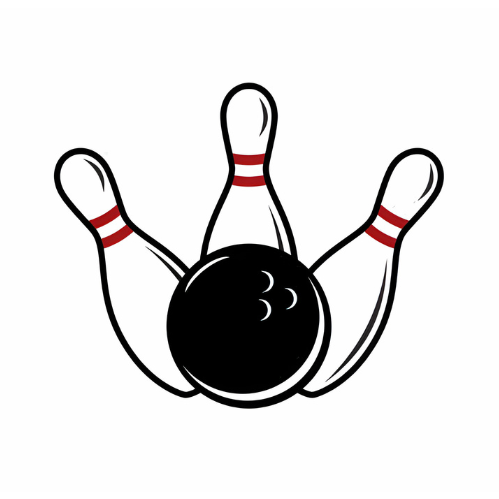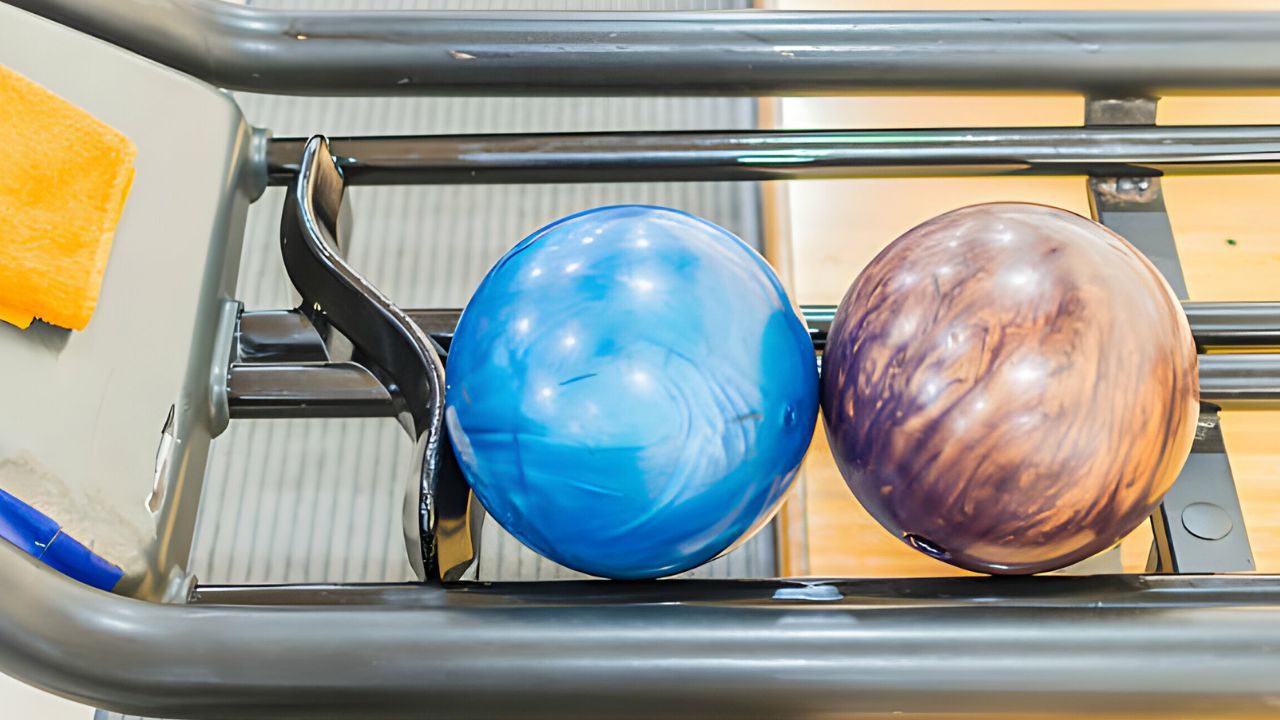Yes, rubber bowling balls are legal in sanctioned bowling games. They comply with regulations set by bowling authorities.
Rubber bowling balls hold a significant place in the history of bowling, tracing back to the early 20th century. They were once the pinnacle of bowling technology, offering bowlers enhanced control and predictability. Today, they serve as a dependable option for straight bowlers and are popular among those who enjoy the sport recreationally.
Despite advancements in materials like reactive resin and urethane, rubber bowling balls remain a viable choice for certain playing styles and conditions. They exemplify the rich tradition of bowling and continue to be relevant for players who prefer a particular ball motion or nostalgia on the lanes.
Rubber Bowling Balls: A Historic Synopsis
Let’s roll back the years and explore the journey of bowling balls. Rubber bowling balls have a unique place in the history of the sport. They mark a period of innovation that changed the game forever. This segment dives into the past, where we trace the evolution from the earliest materials to the rubber era in bowling.
From Hardwood To Rubber
In the beginning, people used hardwood to make bowling balls. Hardwood balls were heavy and hard to control. By the early 20th century, rubber bowling balls took the stage. These rubber balls, known as ‘mineralite’ balls, allowed bowlers better control and precision. Bowlers were excited about the grip and durability these balls offered on wooden lanes.
- Early 1900s: Introduction of rubber balls
- Better grip and control compared to hardwood
- Increased popularity in the sport
The Shift To Modern Materials
As technology advanced, so did bowling ball materials. The 1950s marked a big change. Plastic balls, known as ‘polyester’, started to appear. These were more durable and consistent than rubber. In the 1960s, urethane bowling balls entered the mix. Urethane balls offered even more hook and power on the lanes.
| Decade | Material | Impact |
|---|---|---|
| 1950s | Plastic (Polyester) | Increased durability |
| 1960s | Urethane | Enhanced hook and power |
Nowadays, rubber bowling balls are not common in professional play. There are now high-tech materials like reactive resin. Yet, the rubber ball era remains an important chapter in bowling history.
The Legality Of Rubber Bowling Balls
Think rubber bowling balls are a relic of the past? Think again! Rubber bowling balls once dominated the lanes. Today, many bowlers wonder whether these balls still hold any legal status in competitive bowling. Let’s dive into the current rules and exceptions.
Current Usbc Standards
The United States Bowling Congress (USBC) sets the standards for all equipment. All bowling balls, including rubber, need USBC approval. The USBC checks:
- Weight – Bowling balls must not exceed 16 pounds.
- Size – A maximum circumference of 27 inches.
- Coverstock – Surface materials must meet USBC guidelines.
Rubber bowling balls often meet these specifications. Therefore, they are legal in many bowling centers and tournaments that follow USBC rules.
Exceptions And Usage In Special Leagues
Some leagues and competitions have their own rules. These are usually nostalgic events or tournaments with vintage themes. They often encourage the use of old-style rubber balls. Additionally, certain casual leagues allow any type of ball. This makes it easy for everyone to join in, regardless of the equipment they have.
In conclusion, whether you’re a seasoned pro or a casual player, rubber bowling balls are still a valid choice under USBC standards, and they hold a special place in the heart of bowling history and in special leagues that appreciate the charm of the game’s past.
Performance Factors: Rubber Vs. Contemporary Options
When exploring the world of bowling, one can’t help but notice the rivalry between traditional rubber bowling balls and contemporary materials. This section zeroes in on the distinctive performance factors of rubber and the more modern options. Let’s examine how they stack up in terms of friction, lane conditions, and durability.
Friction And Lane Conditions
Friction is a vital factor in bowling performance. Rubber bowling balls are known for their predictability. They roll steadily on the lane. This steadiness often appeals to those who desire a consistent roll.
- Rubber balls: offer moderate friction, better for dry lane conditions.
- Modern materials: designed to handle various lane oils.
| Material | Friction Level | Ideal Lane Condition |
|---|---|---|
| Rubber | Moderate | Dry |
| Contemporary | Adjustable | Diverse |
Durability And Longevity
Durability and longevity are important for bowlers. Rubber balls tend to last for decades. Their construction is less complex yet remarkably resilient. They withstand impact and wear quite well.
- Rubber balls: tough and enduring; maintain performance over time.
- Contemporary options: high-tech materials customizing the lifespan.
Modern materials can vary widely in durability. Some advanced balls are susceptible to oil absorption, requiring more maintenance. Conversely, the latest tech in bowling balls allows for customized experiences tailored to the bowler’s needs.

Credit: www.athleticbusiness.com
Pros And Cons Of Using Rubber Bowling Balls
Welcome to the intriguing world of bowling ball choices, where the material of your ball can impact your game dramatically. Let’s delve into the advantages and disadvantages of using rubber bowling balls, a classic option that continues to roll through the memories of many enthusiasts.
Nostalgia And Vintage Appeal
Rubber bowling balls, an emblem of bowling’s golden era, offer a trip down memory lane. These gems embody bowling’s history, providing a tangible connection to the past. Vintage leagues often require rubber balls, enhancing the game’s traditional feel. Bowlers treasure these balls for their unique aesthetics and the warm, rich colors not found in modern bowling balls.
- Connection to bowling’s storied past.
- Essential for vintage bowling leagues.
- Stand out design and color options.
Limitations In Today’s Bowling Alleys
Although rubber bowling balls bring a wave of nostalgia, their performance in modern lanes might not strike out the competition. Technological advancements in lane materials, such as synthetic approaches, have rendered rubber balls less effective. Their reduced hook potential and limited versatility in varying oil conditions can lead to inconsistencies in player performance.
| Aspect | Impact on Game |
|---|---|
| Hook Potential | Lower compared to new materials. |
| Versatility | Limited in different oil patterns. |
| Consistency | Can vary with lane conditions. |
For bowlers seeking a piece of history with a twist of current-day play, a rubber bowling ball is a worthy choice. While limitations exist, the joy of rolling a classic ball down the lanes is an experience unto itself.
Navigating The Rules: Tips For Bowling Enthusiasts
For those who love bowling, understanding the rules is key. Rubber bowling balls once ruled the alleys, but times have changed. It’s crucial to know what’s allowed now. Here’s how to stay in the game and make sure your gear meets today’s standards.
Choosing The Right Ball For Your Game
Selecting a bowling ball isn’t just about color or style. The material plays a huge part in how the ball will behave on the lanes. Rubber balls were popular but bowlers now prefer urethane or reactive resin balls.
Why? They offer better hook potential and durability. Before buying a ball, consider these points:
- Check the ball’s material.
- Understand the lane conditions you’ll play on.
- Know your bowling style and grip preference.
- Consult with professionals at a pro shop.
A well-informed choice enhances your bowling experience.
Staying Updated With Usbc Regulations
The United States Bowling Congress (USBC) sets the rules for bowling equipment. Always consult the latest USBC guidelines to ensure your equipment is approved.
| USBC Rule | Equipment | Legal Status |
|---|---|---|
| Rule 1 | Rubber Bowling Balls | No longer approved |
| Rule 2 | Urethane and Reactive Resin | Approved |
| Rule 3 | Weight and Size Specifications | Must be met |
Regularly check for updates to avoid disqualification. Understand the role of ball weight, hole specifications, and balance. This ensures you’re always ready for competition.
Future Of Rubber Bowling Balls
Exploring the future of rubber bowling balls leads to fascinating discussions, especially in the ever-evolving world of bowling. Despite advancements in ball materials, the nostalgia and rareness of rubber bowling balls spark continuous interest. Let’s investigate how these classic items still hold significance today.
Collectors’ Items And Antiques
Rubber bowling balls have become treasures from the past. Collectors and enthusiasts seek out these pieces for their historical value and unique characteristics. They represent a bygone era of the bowling sport. Here are some aspects that make rubber bowling balls special to collectors:
- Historic Significance: A window into the sport’s evolution.
- Rarity: Limited availability increases value.
- Variety: Unique colors and brand histories.
Potential Comebacks And Revivals
Interest in vintage and retro items often leads to revivals. Could rubber bowling balls make a comeback? Some bowlers prefer the classic feel and performance of rubber. Advance materials dominate the lanes currently. Yet, rare comebacks are not unheard of in sports. Let’s explore the potential for revival:
- Nostalgia Factor: Old-school appeal draws attention.
- Unique Performance: Different ball motion on the lanes.
- Material Innovation: Integrating old materials with new technology.
While rubber bowling balls may not return as mainstream options, there is a possibility for limited edition releases. Such events could rekindle interest in rubber as a novelty or as a tool for specific playing styles. It is a captivating idea for those who cherish the sport’s rich history.
Conclusion
Bowling with rubber balls may feel like a step back in time, yet legality isn’t an issue. These pieces of nostalgia are approved for casual play and certain tournaments. Always check your league’s rules to stay clear of any surprises.
So, lace up those shoes, and keep rolling strikes within the guidelines!

